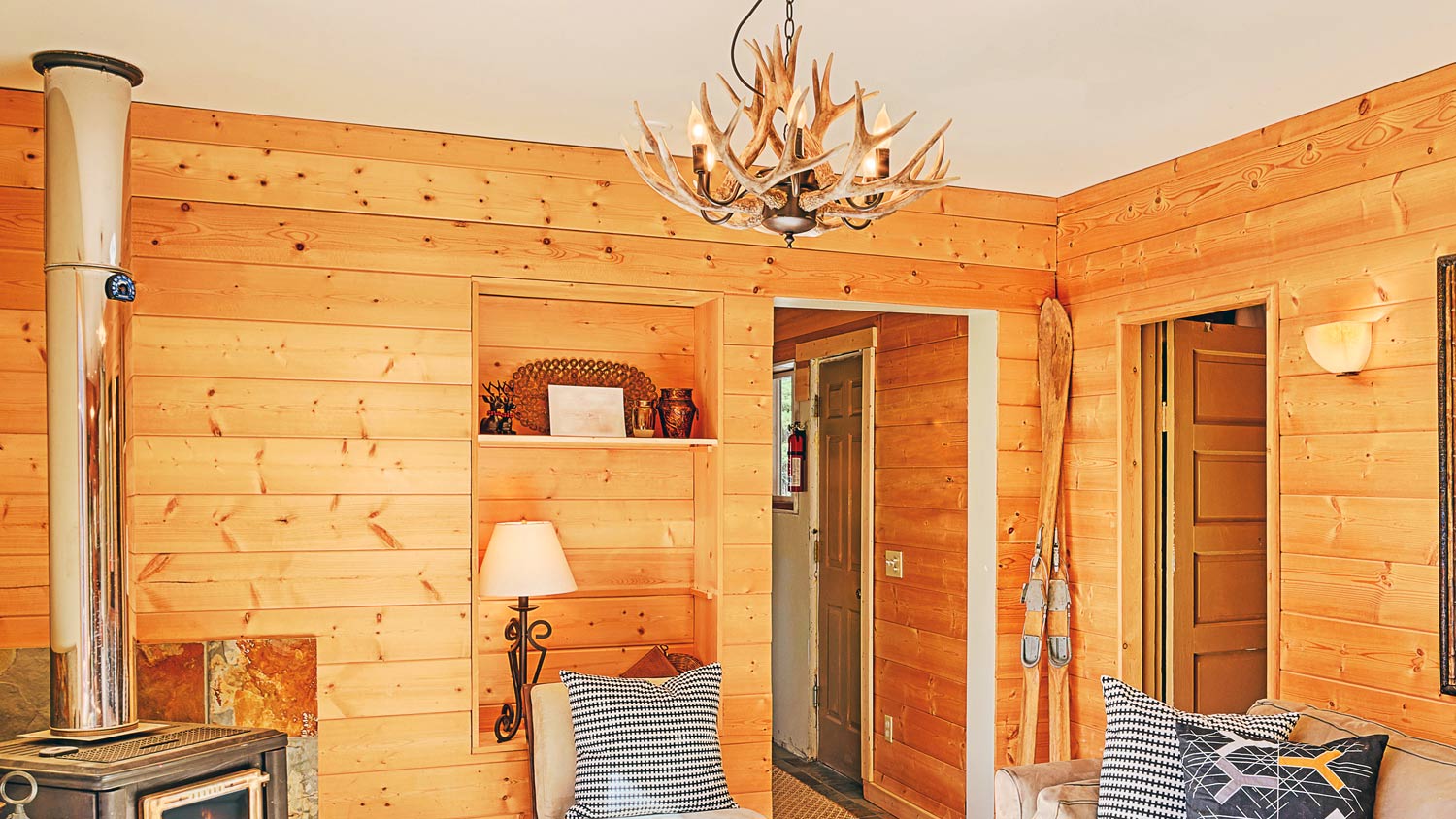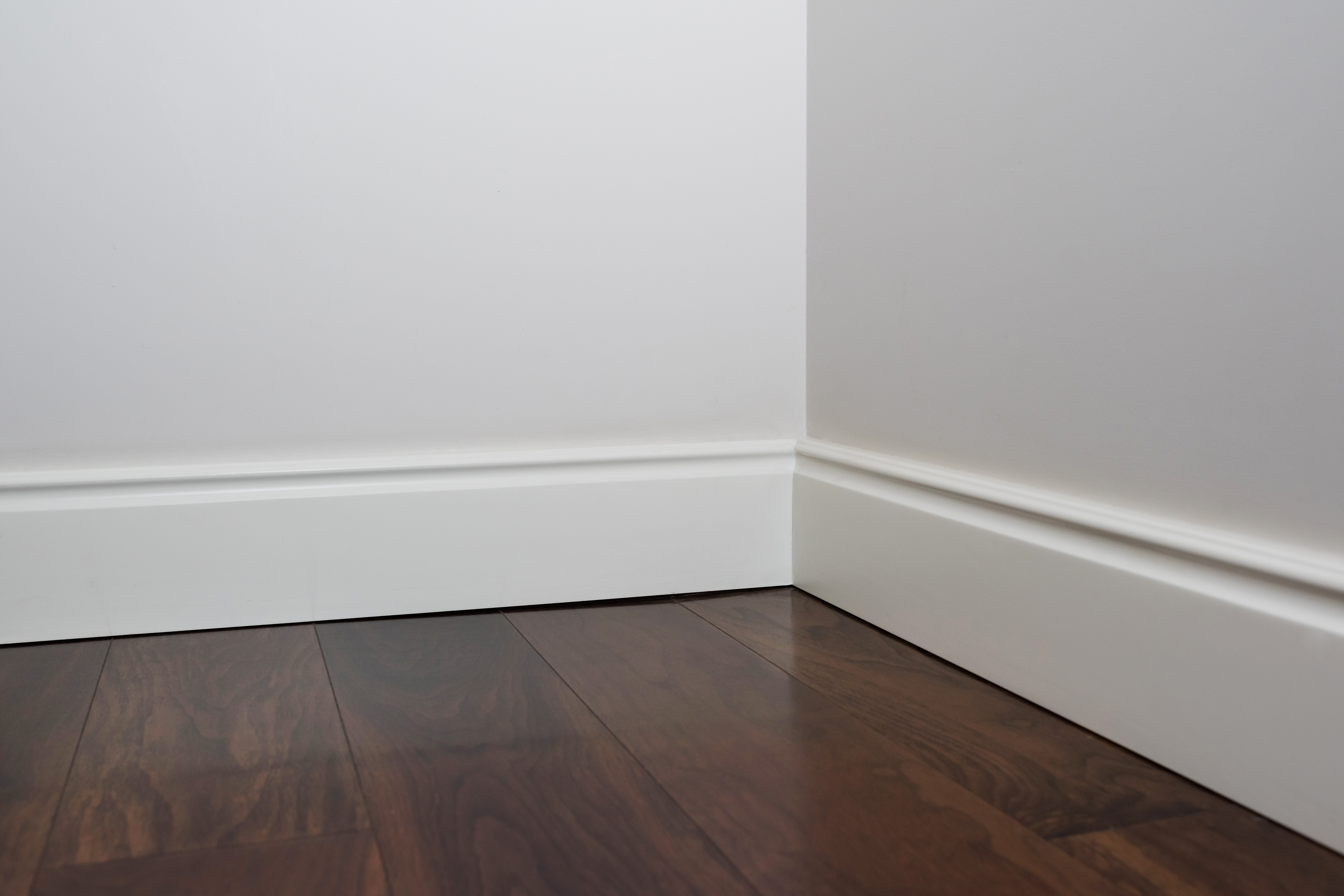
Installing trim can give your home a finished, polished appearance. Learn how much it costs to install trim and what factors affect how much you’ll pay.
Make it look like your books belong in your home


Love to read? Give your library a permanent place to call home by learning how to make built-in shelves. The project is customizable—how large or small you make your shelves depends on how much space you have to work with.
You know what they say: measure twice, cut once. Since you're making shelves that fit your space, determining their size is up to you. You also have flexibility when choosing the style of built-in you make, such as adding doors or a bench between two rows of shelves.
If you need inspiration, home library ideas include building shelves around a window to create a reading nook or making shelves that fill an entire wall.
Got all weekend? That's all you need to make your DIY home library or home office built-in dreams come true. Once you've gathered your supplies and measured the space, get ready to dive in.

Get started by measuring the wood you'll use to build the shelves. For example, let's say you're building shelving on either side of a door. You want to build two shelving units 8 feet high, 3 feet wide, and 1 foot deep. Each shelving unit will have five shelves, plus a top and bottom. Your shelves will rest on a base that's 4 inches high.
For each shelving unit, you'll need to cut your 3/4-inch plywood or wood boards:
Two sides measuring 92 inches high and 12 inches wide
Seven shelves measuring 34.5 inches long and 12 inches wide
You'll also need to cut the two-by-four boards. For each base, you'll need:
Two 36-inch long two-by-four boards
Two 7.5-inch long two-by-four boards
Use the miter saw to cut the two-by-four boards to the right length and the circular saw to cut the plywood or wood.
Assemble the two-by-fours into rectangles, using 3-inch wood screws to attach the pieces together.
Once the bases are attached, line them up against the wall. The frames should rest on the floor. You want the base to be flush with the wall, so you may need to cut away any existing baseboards. After doing that, use the 3-inch screws to attach the base to the wall.
Next, put together the actual shelves. Work on a flat, horizontal surface and arrange the two 8-foot boards parallel to each other, then place the bottom and top shelf between them, creating a rectangle. Run a line of wood glue along the short edge of the bottom and top shelf.
Use wood clamps to hold the boards together. Use a pocket hole jig to create holes in the 8-foot boards and pocket screws to attach the bottom and top shelf to the longer boards.
Now, decide how tall you want the interior shelves to be. Position the three remaining boards inside the frame, running a line of wood glue along the shorter edges. Hold the boards in place with clamps, then use the pocket hole jig and pocket screws to attach them to the 8-foot boards.
Repeat the process with the second set of boards.
Add a back to the shelving units by cutting a 1/4-inch plywood board to the edges of the frame. Attach the plywood to the bookshelf frame using a nail gun.

Set one of the shelving units on top of one of the base frames. Check that it's level and looks good, then use 1.5-inch screws to attach the unit to the wall. Use a stud finder to locate studs to drill into.
Now that your shelves are firmly attached to the wall, it's time to paint. Apply a coat of primer to start, or use paint with built-in primer to save yourself a step.
Sand the shelves, then wipe away any dust and let them dry before applying the first coat. Wait four hours, then sand again and apply the second coat. Let the paint dry overnight before doing one final sanding.
Add trim along the edges to your new built-in shelves to put the finishing touches on them. Measure and cut the MDF so that it fits the sides, top, bottom, and front of each shelf, then use the nail gun to attach the trim to the front.
Cut the baseboard to match the width of each shelving unit, then use the nail gun to attach one board to the front of each base.
Use caulk to fill in any holes the nails create, then add a final coat of paint to the MDF and baseboard.
If you're handy and don't mind spending a weekend with a saw, drill, or hammer, building your own built-in shelves may be the perfect way to spend your time. On the other hand, if you're nervous about messing up the measurements or aren't quite sure you'll be able to attach the shelving securely to the wall, you can always contact a local carpenter for the job.
Hiring a professional carpenter to build your built-in shelves for you will likely double or triple the project cost. But you'll get the peace of mind of knowing that your shelves are sturdy and built to last. Plus, you'll get your weekend back.
From average costs to expert advice, get all the answers you need to get your job done.

Installing trim can give your home a finished, polished appearance. Learn how much it costs to install trim and what factors affect how much you’ll pay.

Whether you need to heat your home for the winter or simply enjoy lighting a fire occasionally, it's helpful to know the cost of a cord of wood in your area.

Get the facts on the cost to remove wood paneling, including average prices, key factors, and tips to help you budget your project with confidence.
.jpeg?impolicy=leadImage)
You have multiple options for creating DIY home office built-ins. Learn more about what it takes to make cabinets and bookshelves that look amazing.

When it comes to deciding between MDF baseboards versus wood, knowing the pros and cons of each option will help you make the right choice.

What are baseboards? They’re the narrow pieces of trim that fit along the walls near the floor, providing a stylish look and protection for walls.